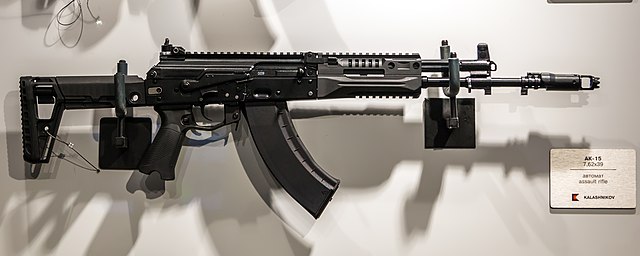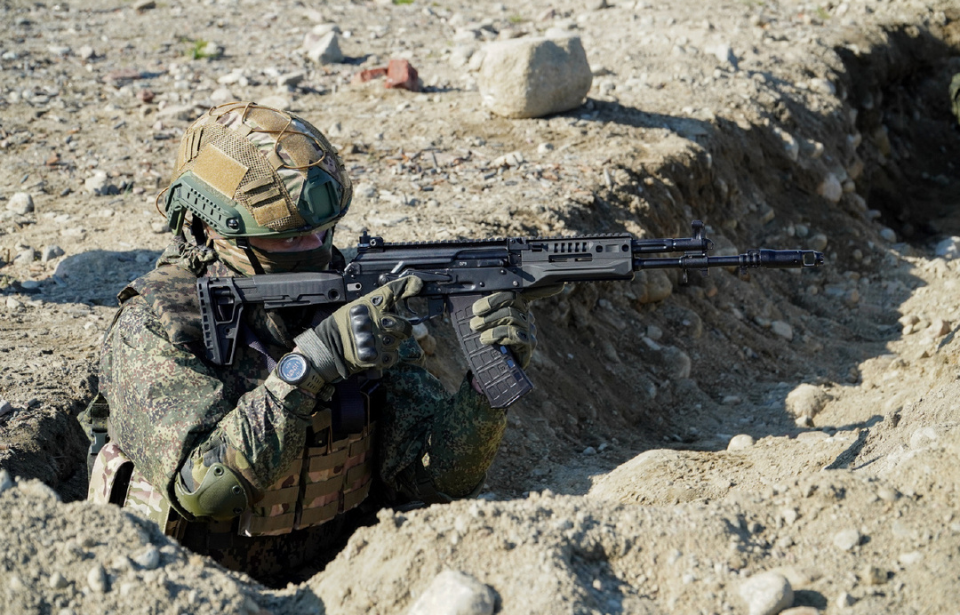While the AK-47 is arguably the most famous Russian-borne rifle ever, the country has been the birthplace of many other capable weapons. One of them is the AK-15, which entered service with the Russian military in the late-2010s, alongside the AK-12. With its upgraded features and increased rate of fire, the rifle is a force to be reckoned with on the battlefield.
Developing a replacement for the AK-74M

While the AK-15 can trace its origins back to the AK-47, its true ancestor is the AK-74M – in particular, the 1990s-era “M” variant. It was developed as part of “Ratnik” program, which aimed to create upwards of 40 new items for Russian service members. This resulted in the development of the AK-12, with the AK-15 serving as a base model of the former.
While both rifles are similar to the AK-74M, they were designed to include features that make them more comfortable to use. This includes ambidextrous controls, a new muzzle brake for increased control and the addition of Picatinny rails. The one at the top is to allow for the use of accessories, while the bottom is intended to offer the option of adding a forward pistol grip.
After undergoing troop trials in 2017, the AK-12 and AK-15 were officially adopted by the Russian military.
AK-15 specs

The AK-15 is a gas-operated, selective-firing rifle that, overall, appears to follow the typical Kalashnikov Concern design, with just a few tweaks to the magazine well, the gas tube and the foregrip. It weighs approximately 7.72 pounds and has an overall length of 37 inches, of which 16.3 is the barrel.
To make the weapon easier to use in the field, the AK-15 was designed with a foldable buttstock that’s said to resemble the US M4 Carbine. Its handguard has also been further slotted to allow for increased natural cooling, meaning it can keep up its rate of fire without a need for long pauses. This also keeps the operator’s hand safe.
Speaking of firepower, the rifle has an RPM of 700 – 50 rounds more than the AK-47M. It’s most effective at 350 meters, and it chambers the Soviet-era 7.62 x 39 mm.
At the ARMY-2020 exhibition in Moscow, Kalashnikov Concern revealed some updates to both the AK-15 and AK-12. While nothing major was changed, the upgrades did feature several ergonomic improvements.
Variants of the AK-15

While the AK-15 is in and of itself a variant of the AK-12, some rifles have been developed based on its design. There’s the AK-15K, featuring of a shorter barrel, and the AK-308, which was requested by international purchasers as an export model.
While similar to the AK-15, the AK-308 features more modern components, the most notable of which is its ammunition, which is the standard 7.62 x 51 mm NATO. This means that its barrel has been both stretched and strengthened, allowing the rifle to better withstand the increased thrust of this type of ammunition.
In terms of its firepower, the AK-308 maintains the standard 700 RPM seen with the AK-15. It also shares the ability to attach a host of accessories, just like the AK-12 and AK-15.
A growing list of international operators

Outside of Russia, the list of countries operating the AK-15 and its variants is rather slim. That being said, it also appears to be growing. The first nation to show interest in the rifle was Armenia, with the Ministry of Defence announcing in 2018 that it had secured the rights to manufacture the AK-15 and AK-12. Both are also equipped by various units within the Egyptian military – most notably, the country’s Special Forces.
More from us: Benelli M4: The Superior Semi-Automatic Shotgun Built Specifically For Combat
In 2022, it was announced that the Directorate General of Defence Purchase in Bangladesh had shown interest in purchasing 2,000 AK-15s from Russia. However, there’s been no update regarding whether an order was placed.
